1. The Dime-A-Milk Transaction
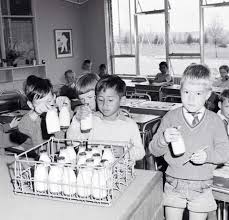
Before electronic systems, the rhythmic clink of a dime was the universal currency for a cold bottle of milk, a small luxury often consumed standing near the cashier. This simple transaction was a moment of fleeting independence; a dime was just enough to secure a small, chilled bottle, often from a metal cooler. The exchange was quick, a brief pause in the line where a child’s small coin was traded for an icy-cold beverage. The milk was a staple, heavily subsidized by federal programs like the National School Lunch Program (NSLP), which has been operational since 1946. Even though the price eventually increased, the early memory of that specific coin for a drink remains a nostalgic touchpoint for those who remember the simple, analog rhythm of the daily lunch ritual, connecting children directly to the physical act of purchasing their meal component.
2. Glass Bottles Were Treasured Vessels
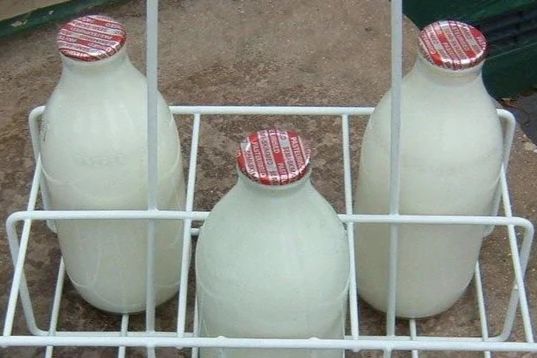
For a time, particularly in the mid-20th century, school milk arrived in small, sturdy glass bottles sealed with a simple foil or paper cap. These bottles felt substantial, a stark contrast to later disposable cartons. Part of the ritual was prying open the cap, often with a practiced fingernail or the flat edge of a ruler, and if you were lucky, savoring the small, rich layer of cream that collected at the top. The glass made the milk feel colder, and the collective clinking of the empties being dropped into wire crates for washing and reuse was a loud, distinct sound. This practice was a holdover from local dairy delivery models and reflects a time when less single-use packaging was the standard. The small, squat bottles weren’t just containers; they were a tactile and audible part of the school day experience, evoking a sense of heritage and connection to local industry before mass-produced cardboard became the norm.
3. Iconic, Fussy Milk Cartons Took Over
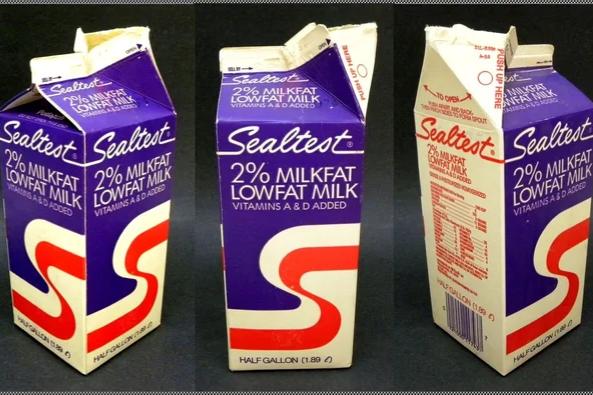
By the 1960s and 70s, the cardboard milk carton became the ubiquitous standard, forever changing the lunchtime soundscape. These small, waxy containers, typically half-pints, introduced a new challenge: opening the spout. It was a delicate, folded origami of paper that demanded a specific, gentle pull. Failure resulted in a messy, frustrating tear, leading to spills or a hard-to-drink opening. The smell of warm milk, often sitting on the lunch line before being served, was an unavoidable, polarizing aroma in every cafeteria. The move to cartons was driven by efficiency, easier transport, and the shift away from glass reuse, but it also became a deeply embedded, sometimes clumsy, part of the ritual, symbolizing the era’s transition to disposable convenience.
4. Metal Trays Staged the Daily Meal
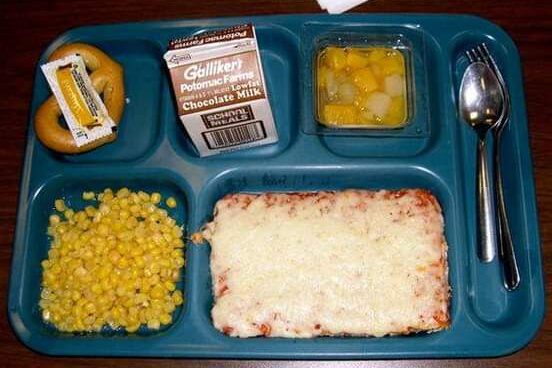
The very definition of a school lunch was the heavy, compartmentalized metal tray. Sturdy and virtually indestructible, these trays, often made of stainless steel or aluminum, were the industrial stage for every meal. They featured distinct wells for the main dish, vegetables, roll, and dessert, ensuring separation, a crucial feature for picky eaters. The loud clattering sound as hundreds of these trays were stacked at the end of the line was the closing soundtrack to lunch period. They weren’t colorful or cute like later plastic versions; they felt serious, reflecting the institutional, military-like efficiency of large-scale food service operations. The tray itself was a physical anchor to the experience, a weighty, cool surface that held both culinary triumphs (like pizza day) and infamous flops (like mystery meat).
5. Hot vs. Cold Lunch Was a Silent Divide
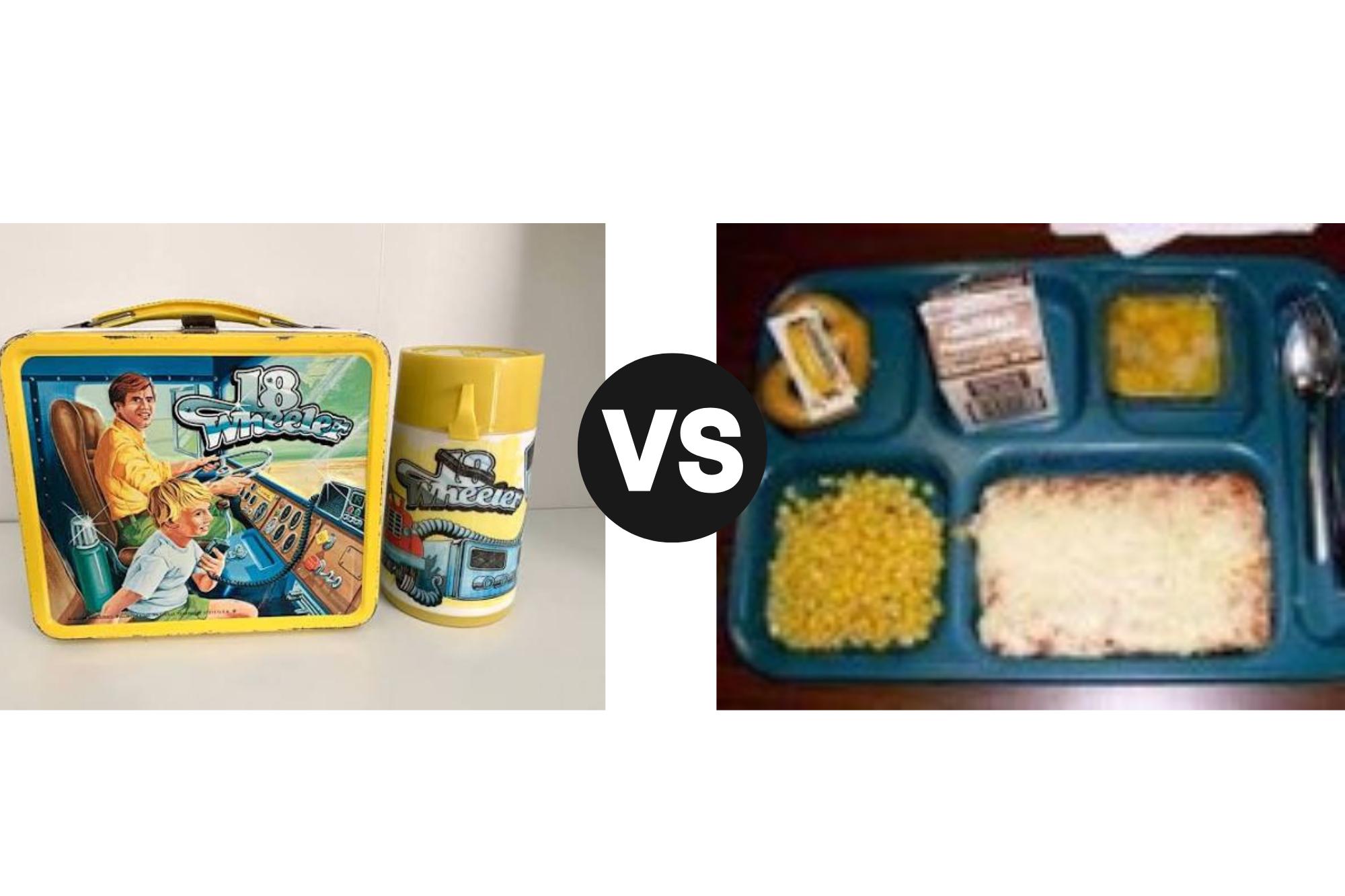
The choice between the school’s hot lunch and a meal packed from home, the cold lunch in a brown bag or metal box, created a subtle but palpable division among students. Hot lunch kids faced the daily lottery of the cafeteria menu, sometimes rewarded with a favorite like sloppy joes, and other times confronting a plate of liver and onions. Meanwhile, cold lunch kids brought the known comfort of a peanut butter and jelly sandwich, but occasionally felt a pang of envy for the hot rolls, ice cream cups, or unexpected treats offered on the school tray. This divide was more than just about the food; it represented different home economics and cultural habits. Bringing a brown bag symbolized home-based effort, while the hot lunch represented a shared, government-subsidized experience, a quiet rivalry that defined a small but significant part of the school day social hierarchy.
6. Brown Bags Spoke of Simple, Packed Love

The simple brown paper bag, folded over at the top, was the classic casing for the cold lunch. Inside lay predictable, yet comforting, contents: a sandwich (often tuna or ham and cheese), a piece of fruit like an apple or banana, and perhaps a small bag of chips or a cookie. These bags, often reused from the grocery store, were the antithesis of the school’s hot meal. They were a direct, tangible link to home, and occasionally, a parent’s small gesture, a doodled heart or a quick note, transformed the ordinary sack into a special message. The brown bag lunch, wrapped in wax paper and foil, represented a quiet, personal ritual, a moment of consistency and care in the often chaotic school environment, a small package of domesticity brought into the institutional setting.
7. Metal Lunchboxes Were Pop Culture Trophies
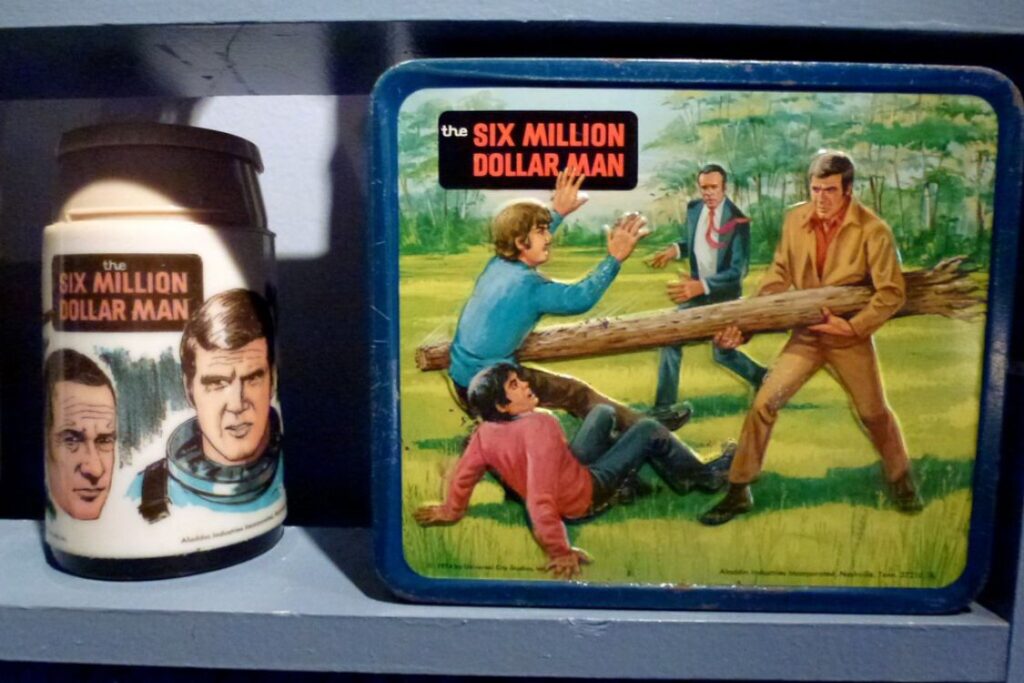
Long before backpacks had built-in insulation, the metal lunchbox was a highly visible childhood status symbol. These boxes were essential pop culture billboards, featuring brightly lithographed graphics of major cartoons, superheroes, and TV shows of the era, from The Six Million Dollar Man to The Smurfs. The loud metallic clang when they were accidentally dropped was a familiar sound in school hallways. The artistry on the box was as important as the food inside; kids would line them up and compare their designs, showcasing their current cultural allegiances. These boxes, often paired with a matching Thermos, were more than just food containers; they were a form of self-expression and a collector’s item, embodying the visual aesthetics of the decade.
8. The Thermos: Hot or Horrible
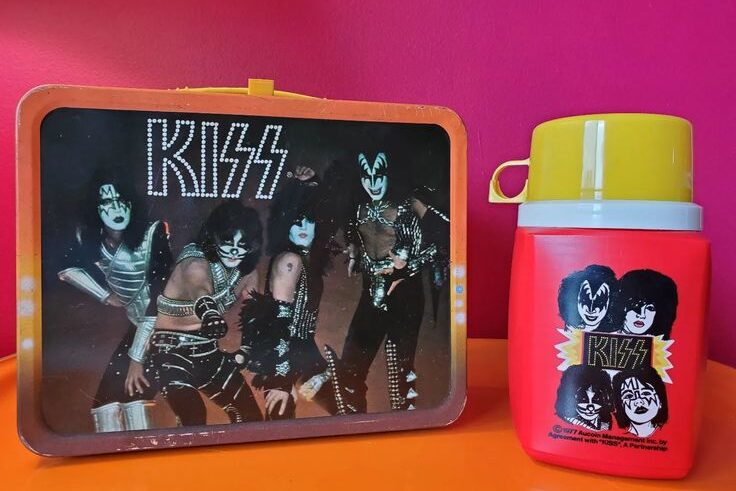
The Thermos, often snugly clipped inside the metal lunchbox, was a high-concept container promising hot soup in the winter or cold lemonade in the summer. It was, however, a gamble. Success meant a warm, comforting meal; failure meant a lukewarm, slightly sour liquid that often leaked or, worse, developed a distinctly foul aroma. Made with an outer metal shell and an inner glass vacuum tube, they were fragile, and the smell of stale tomato soup or spoiled milk often became trapped in the plastic cup-cap. Opening a Thermos could be a dramatic olfactory event, eliciting groans or curiosity from tablemates. Despite the risks, the Thermos represented a parental effort to deliver a special, warm meal, a small pocket of home cooking intended to break up the monotony of cold sandwiches.
9. Meatloaf Was the Infamous Mainstay
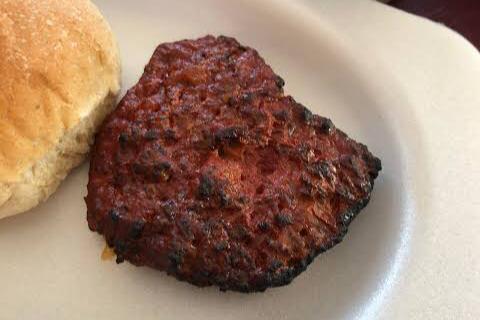
Meatloaf, often a dense, grayish-brown slab served with a thin, bright-red ketchup glaze or gravy, was a foundational pillar of the old-school cafeteria menu. Its reputation was mixed: some students enjoyed the hearty, filling quality, while others found its texture and vague flavor unappetizing, resorting to pushing it around the compartmentalized tray. Regardless of personal opinion, the distinct, cooked smell of bulk ground meat and tomato product was a predictable, potent aroma that signaled the start of lunch, often wafting down the halls before the bell even rang. It became a shared, universal culinary memory, symbolizing the mass-produced, often low-cost, institutional recipes of the time, perpetually present in the federal school food service rotation.
10. Fridays Always Meant Fish Sticks
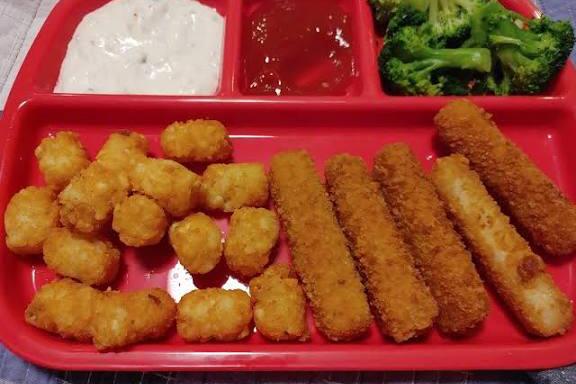
In many districts, the menu was reliably dictated by religious tradition, making fish sticks a predictable and dependable Friday staple. Due to the historical observance of abstaining from meat on Fridays by large segments of the Christian population, especially Catholics, schools often served a non-meat option. These frozen, breaded, rectangular portions of processed white fish, served with tartar sauce, were an easy, cost-effective substitute. Alongside them usually sat a mound of mashed potatoes or green peas. Even students who didn’t strictly follow the tradition came to rely on the routine, learning early on that certain menu items were institutionalized rituals. The fish stick became a cultural shorthand for the end of the school week and the influence of societal and historical patterns on school meal planning.
11. Sloppy Joes Were the Ultimate Mess
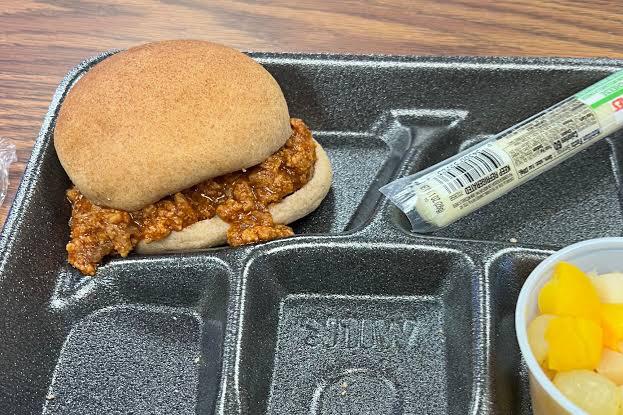
The Sloppy Joe, a mountain of saucy, seasoned ground beef piled onto a soft, often steamed bun, was a beloved, gloriously messy creation. As the name suggests, it was impossible to eat cleanly, with the sweet, tangy tomato-based filling inevitably oozing out and staining fingers, trays, and clothes. Kids enthusiastically embraced the mess, turning the consumption of a Sloppy Joe into an action-packed, napkin-heavy event. It was a classic example of comfort food translated into a mass-produced, economical dish suitable for a cafeteria line. The sheer enjoyment of its taste and the required effort to manage the spill made it a memorable, joyful exception to the often-stiff decorum of the lunchroom, a true ‘carnival food’ of the school week.
12. Buttered Rolls Were Simple Gold
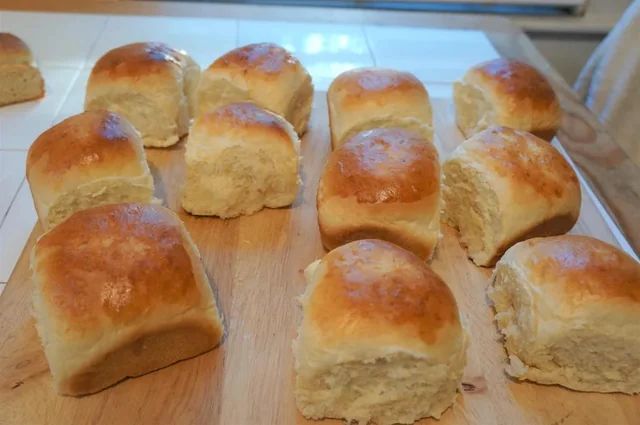
In a meal often dominated by heavily seasoned or indistinct main courses, the buttered roll was a simple, universally adored component. These were typically small, soft white rolls, often served warm, accompanied by a small, perfectly square pat of butter. They represented a pure, comforting carbohydrate that provided a delicious, textural contrast to the meal. For many, they were the highlight of the tray, a sought-after item sometimes traded for less desirable entrees. The roll’s simplicity and warmth stood out in the institutional setting, offering a moment of unadulterated pleasure. Their inclusion was cost-effective and helped ensure students had sufficient energy, but for kids, they were merely a small, perfect luxury.
13. Hearty Chili and Crumbly Cornbread
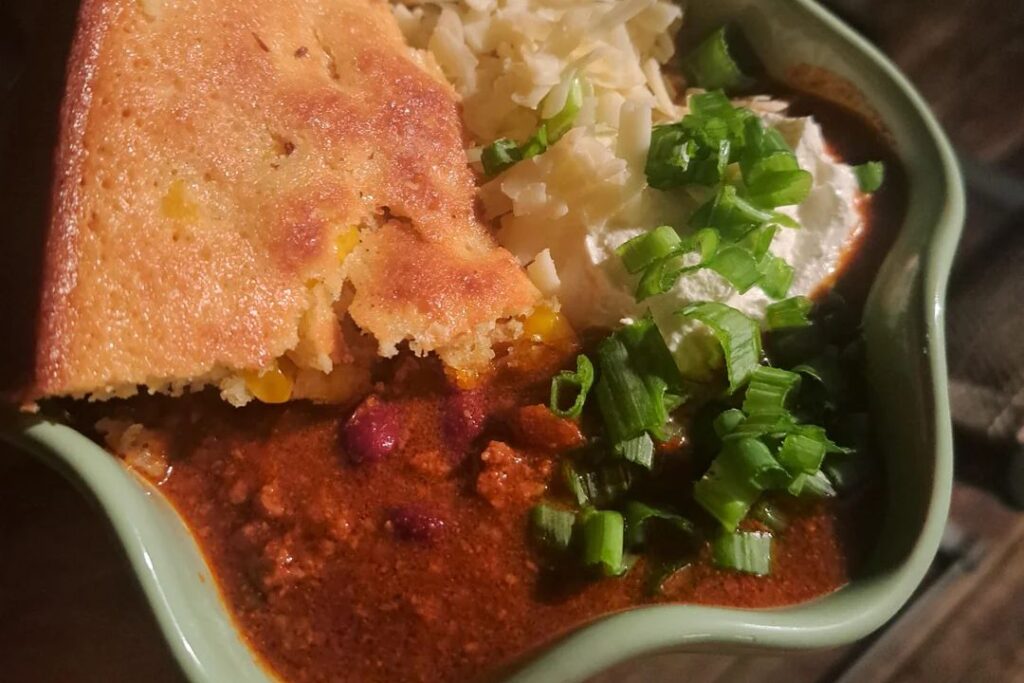
As the weather turned cold, the appearance of chili with cornbread was a welcome, soul-warming event. Steaming bowls of spiced meat and beans, accompanied by a slice of slightly sweet, crumbly cornbread, transformed the cafeteria into a cozy, aromatic haven. The fragrance of chili spice filled the air, replacing the usual smell of boiled vegetables. This meal was incredibly effective at filling bellies and providing warmth during long winter days. The cornbread, often moist from the chili, was the perfect absorbent counterpoint to the rich, hearty soup. This combination was a practical and traditional American dish, lending a sense of home-style comfort to the institutional meal, making it a reliable seasonal favorite.
14. Rectangle Pizza Was Cafeteria Royalty
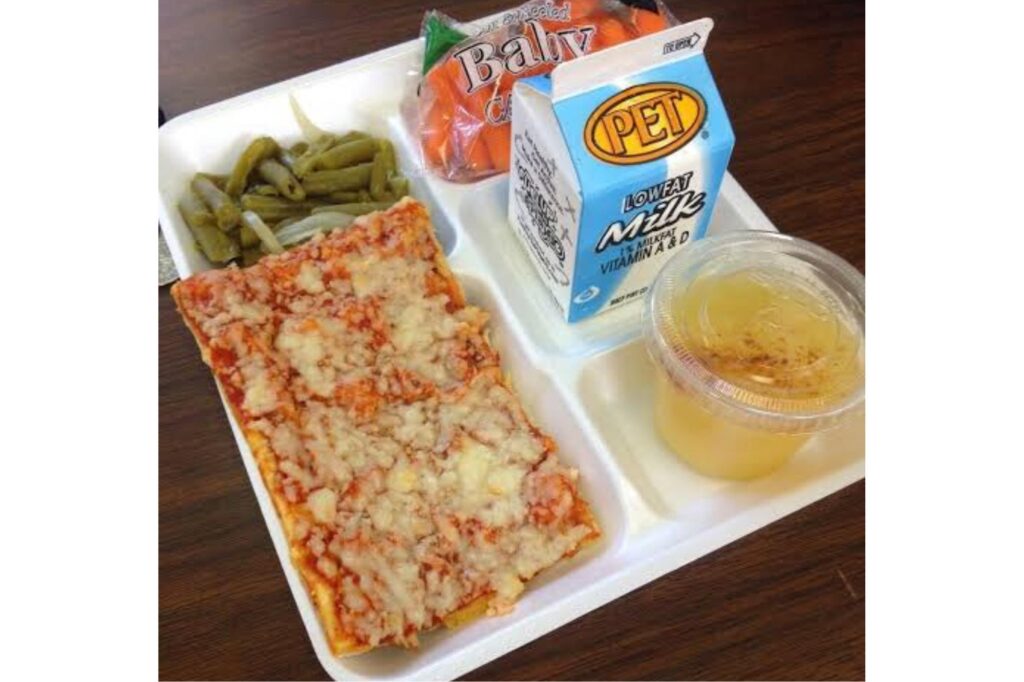
Nothing heralded a good lunch day like the arrival of rectangle pizza. Baked in massive, industrial sheet pans and cut into large, uniform squares, this pizza was distinctly cafeteria food. It featured a thick, chewy crust, a basic tomato sauce, and often had pools of shimmering grease and slightly browned, bubbly cheese. It bore little resemblance to take-out pizza, but its scheduled appearance turned the cafeteria into a low-key celebration. The anticipation for pizza day was palpable, and students would count down the weeks until its return. The unique, square shape and specific texture defined it as an iconic school food, a culinary staple beloved not for its quality, but for its ritual and distinct, nostalgic flavor.
15. Jell-O Cups Offered Wobbly Delight
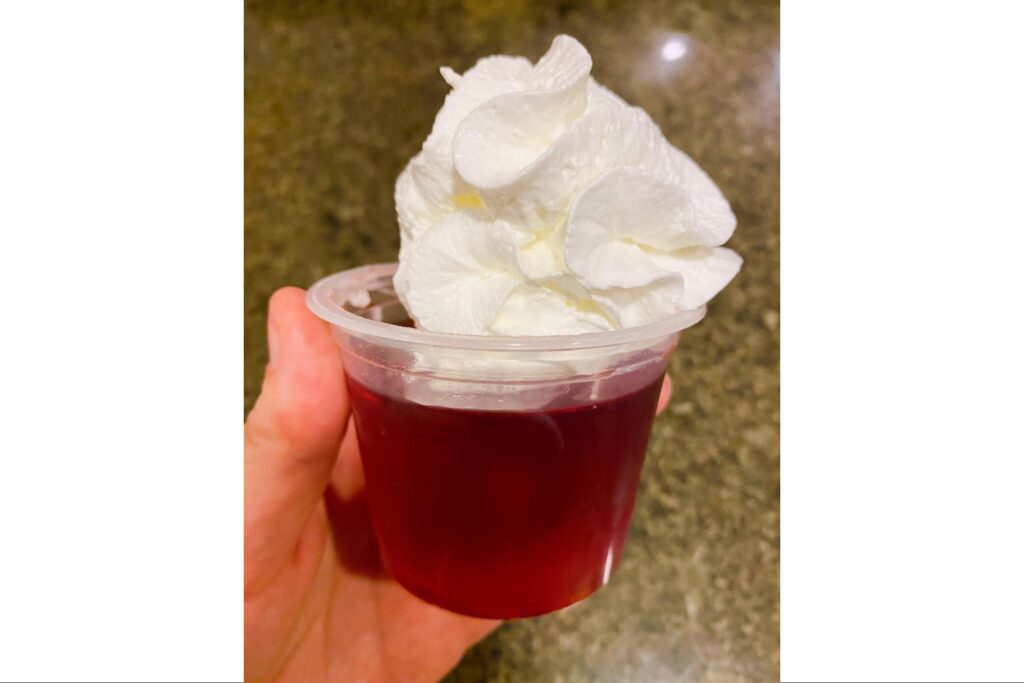
The most playful item on the tray was often the Jell-O cup, a colorful, jiggly serving of gelatin dessert, often shimmering in red, green, or orange. Served in small, clear plastic or glass dishes, the dessert quivered and wobbled with every movement of the tray, sometimes leading to quiet giggles. Occasionally, it was topped with a dollop of whipped cream, making it feel slightly more special. Jell-O was an ideal cafeteria dessert: cheap, easy to prepare in bulk, and visually appealing. It satisfied the sweet tooth without being overly complex. The simple joy of watching the dessert bounce or trying to get a clean spoonful before it collapsed defined this small, brightly colored component of the classic school lunch.
16. The Infamous Mystery Meat Legend
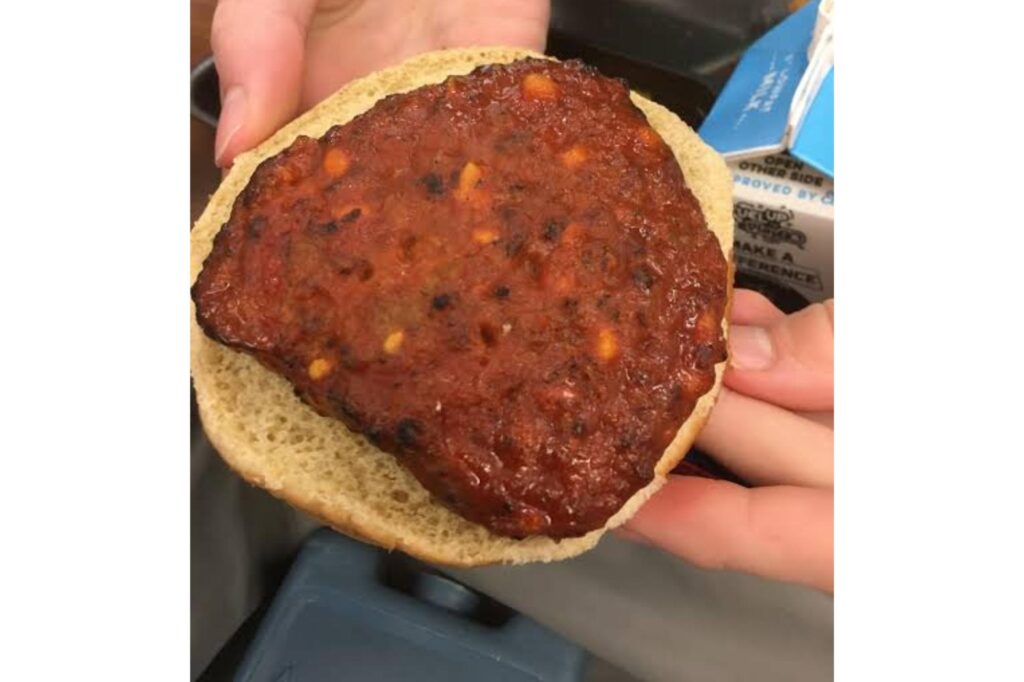
No school lunch memory is complete without the legend of mystery meat. This term referred to any square, oddly textured, or vaguely flavored slice of protein that defied easy identification. Rumors about its actual contents, ranging from “government surplus” to more outlandish theories, were a constant source of cafeteria humor and gross-out stories. These patties or slices were typically low-cost, processed items designed to fulfill protein requirements efficiently. The ambiguity of the meat, often served smothered in a thick, indistinguishable gravy, became a generational shorthand for the lack of transparency and sometimes-questionable quality of institutional food. Even if the meat was completely safe, the legendary uncertainty surrounding it remains a definitive part of the old-school lunch experience.
17. Government Cheese Fed Generations
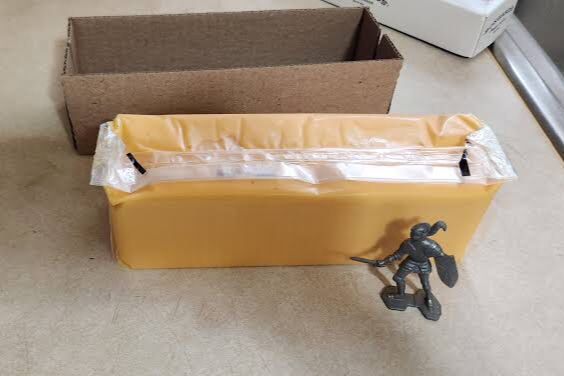
The presence of Government Cheese was a direct result of federal farm subsidy and surplus programs designed to stabilize dairy prices. This dense, often bright-orange, processed American cheese was a staple ingredient in countless cafeteria dishes: grilled cheese, macaroni and cheese, and various casseroles. It was known for its sticky, rubbery texture and an intensely salty, melty quality that was unmistakable. Generations of students grew up on dishes flavored by this commodity cheese, unaware of its origins in national agricultural policy. Its use was a tangible sign of the government’s role in the school food supply chain, making it a powerful, albeit often unappreciated, symbol of the National School Lunch Program’s widespread economic influence.
18. Pudding Cups Felt Like a Small Treat
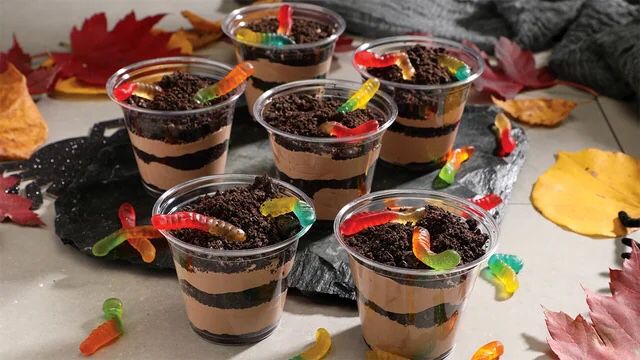
Pudding, whether chocolate, vanilla, or tapioca, served in small, individual plastic or glass dishes, was the perfect small conclusion to a meal. Saving the pudding for last was a common tactic, a way to end the sometimes-challenging meal on a sweet note. The smooth, creamy texture and simple, familiar flavor offered a moment of quiet satisfaction. Even though it was a bulk-prepared, economical dessert, its presentation in a dedicated dish gave it a sense of decadence compared to the rest of the institutional fare. Students would meticulously lick their spoons clean, ensuring they got every last bit of the sugary comfort, making it a quietly coveted item on the lunch line.
19. Lunch Monitors Held the Line
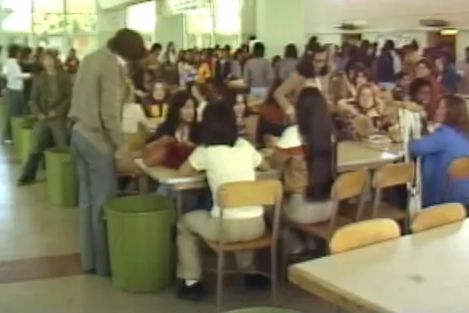
The cafeteria was a high-volume, chaotic environment, and maintaining order fell to the lunch monitors, often a rotating roster of teachers, administrators, or occasionally, older student volunteers. Armed with an authoritative stare or a shrill whistle, their primary job was to enforce the rules: keep the noise down, prevent food from being thrown, and ensure students cleared their trays properly. They were the constant, non-edible fixture of the lunchroom, a necessary presence blending discipline into what was essentially a mass, indoor recess. Their role involved navigating the fine line between allowing social interaction and preventing a full-scale riot, making them the most visible authority figures during the brief, high-energy lunch period.
20. Food Fights Were Instant, Epic Legends
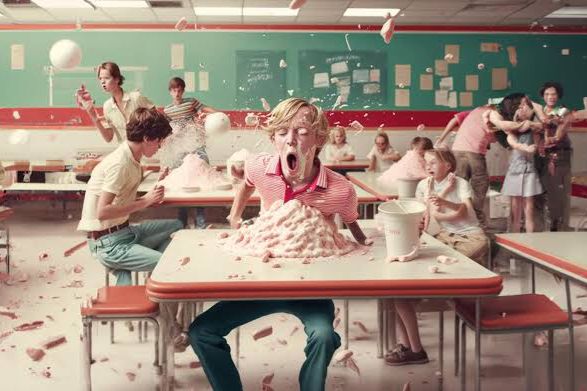
While strictly forbidden and highly punished, the food fight was the ultimate, albeit rare, moment of legendary cafeteria chaos. When one erupted, the room instantly transformed into a zone of anarchy. Mashed potatoes flew like snowballs, milk cartons became exploding projectiles, and the noise reached a deafening crescendo. The immediate aftermath was severe: automatic detention, long cleanup duty, and stern phone calls home. However, the experience became an epic tale, retold and embellished for years by witnesses who felt they had experienced a moment of genuine, albeit brief, rebellion. These fights, while disruptive, became ingrained in the lore of the school, symbolizing the periodic breaking of institutional control.
21. The Constant, Unforgettable Cafeteria Din
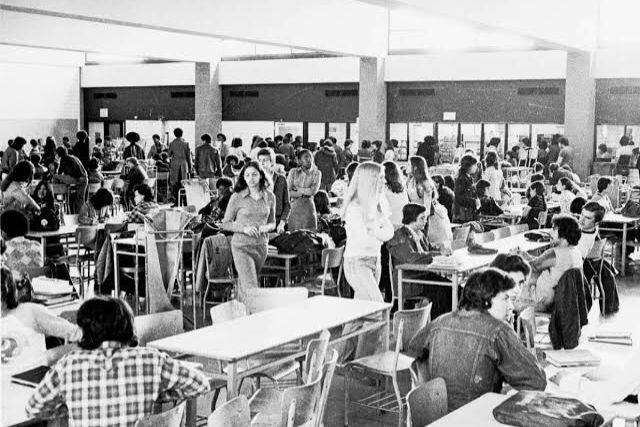
The cumulative sound of a full cafeteria was a unique, unforgettable roar that defined the space as much as the smell of the food. It was a dense, sustained din created by a thousand small, harsh sounds: hundreds of children talking at once, the grinding scrape of chairs on the linoleum floor, the clatter of metal trays and silverware, and the sharp bang of the milk cooler door. Supervisors often tried to calm the noise, but it was an inherent byproduct of the high volume and close quarters. For many, this loud, busy soundscape is an immediate auditory trigger, instantly transporting them back to the energetic, controlled chaos of their elementary or middle school lunch period.
22. Lunch Smells Lingered in the Hallways
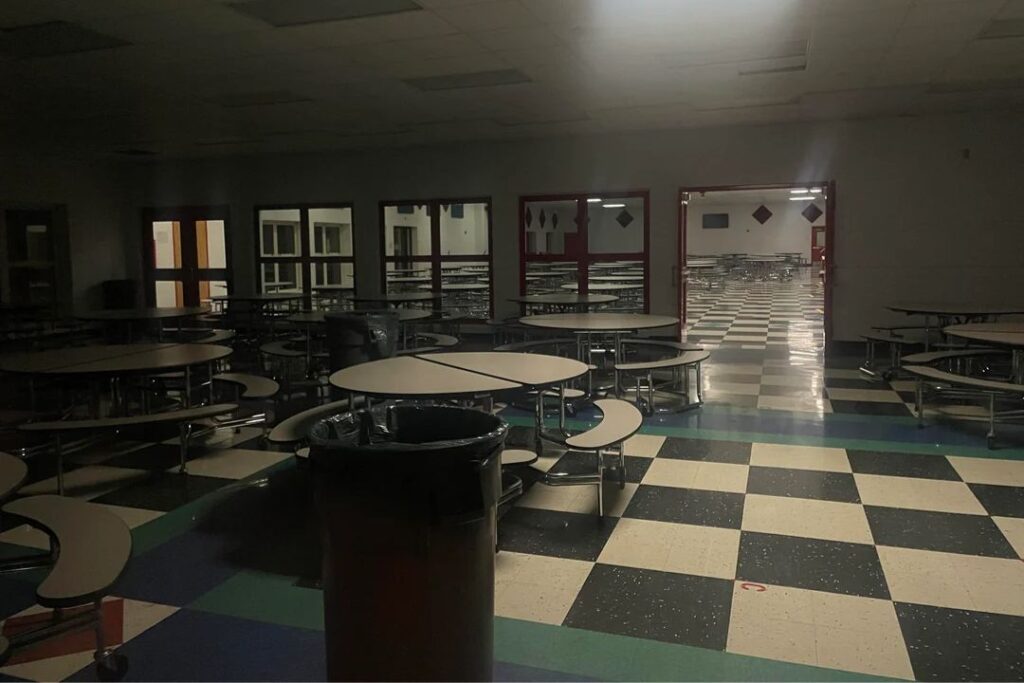
The distinct, heavy smell of school lunch did not stay confined to the cafeteria; it seeped out into the adjacent hallways, stairwells, and sometimes even the classrooms. This pervasive aroma was a complex mix of cabbage, boiled vegetables, baked yeast rolls, and the distinct scent of mass-produced gravy or casserole. While students often joked or wrinkled their noses at the odor, it was a constant, almost olfactory clock that signaled the coming and going of the lunch period. Years later, a faint whiff of a similarly prepared, bulk-cooked meal can instantly transport a person back to the glossy, waxed floors and institutional beige walls of their school days, a powerful and unavoidable sensory memory.
23. The Long, Anticipatory Hot Lunch Lines
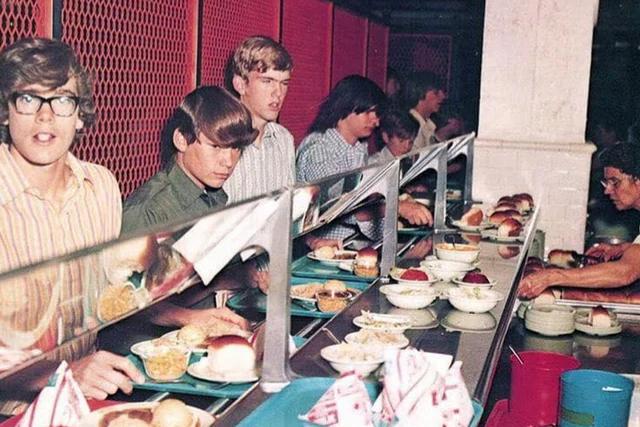
The process of securing a hot lunch meant joining a long, slow-moving line, shuffling forward with a metal tray in hand. This wait was a period of intense anticipation. Students peered over shoulders, watching the steam rise from the large metal serving pans and trying to gauge the day’s offering. The servers, often the same beloved cafeteria ladies, worked methodically, ladling out portions, a scoop of main, a scoop of vegetable, a roll. The suspense was built on the potential reward of a favorite meal, or the disappointment of confronting a highly disliked dish, making the line itself an integral part of the lunchtime drama.
24. Cafeteria Ladies Were Warm, Feisty Fixtures
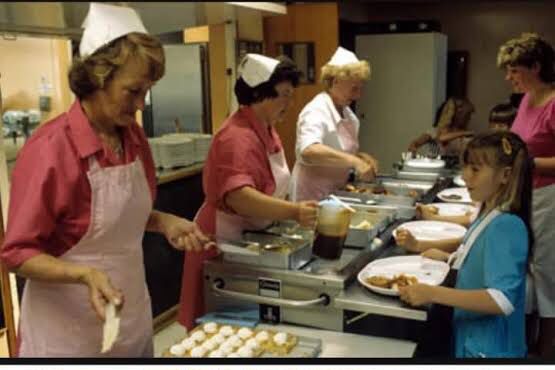
Wearing hairnets, sturdy shoes, and white or coloured aprons, the cafeteria ladies were much more than kitchen staff; they were essential, memorable members of the school community. They often knew students by name, and their interactions were a mix of tough, no-nonsense discipline and unexpected, quiet kindness. They were the ones who enforced portions but might occasionally sneak an extra roll or a bigger scoop of pudding to a shy or hungry child. Their hearty laughs and gentle scolding provided a human, caring element in the institutional setting, linking generations of students to the kitchen staff who fueled their formative years with warmth and countless gallons of milk.
25. School Lunch Was a Shared Coming-of-Age Ritual
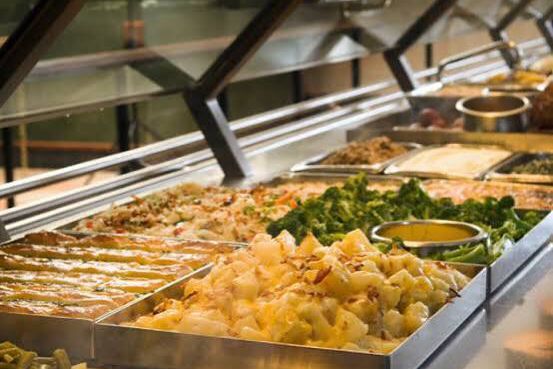
From the simple, high-stakes trade of a dime for a milk bottle to the shared groan over a serving of mystery meat, the daily school lunch was a communal, formative experience. It was the stage for learning social etiquette, witnessing small acts of rebellion (like the occasional food fight), and forging friendships over traded snacks and shared rumors. The trays, the noise, the smells, and the predictable rhythms of the menu created a body of shared cultural memory. Looking back, these meals were far more than just necessary fuel; they were a collective coming-of-age ritual that defined a significant portion of the American public school experience.
What was the absolute best or worst thing you ever found on your metal tray? Share your favorite old-school lunch memory in the comments below!
This story 25 Still Strong Memories of Old-School School Lunch was first published on Daily FETCH


